Fortinet NSE7_SDW-7.2 Fortinet NSE 7 – SD-WAN 7.2 Online Training
Fortinet NSE7_SDW-7.2 Online Training
The questions for NSE7_SDW-7.2 were last updated at Mar 11,2025.
- Exam Code: NSE7_SDW-7.2
- Exam Name: Fortinet NSE 7 - SD-WAN 7.2
- Certification Provider: Fortinet
- Latest update: Mar 11,2025
Refer to the exhibits.
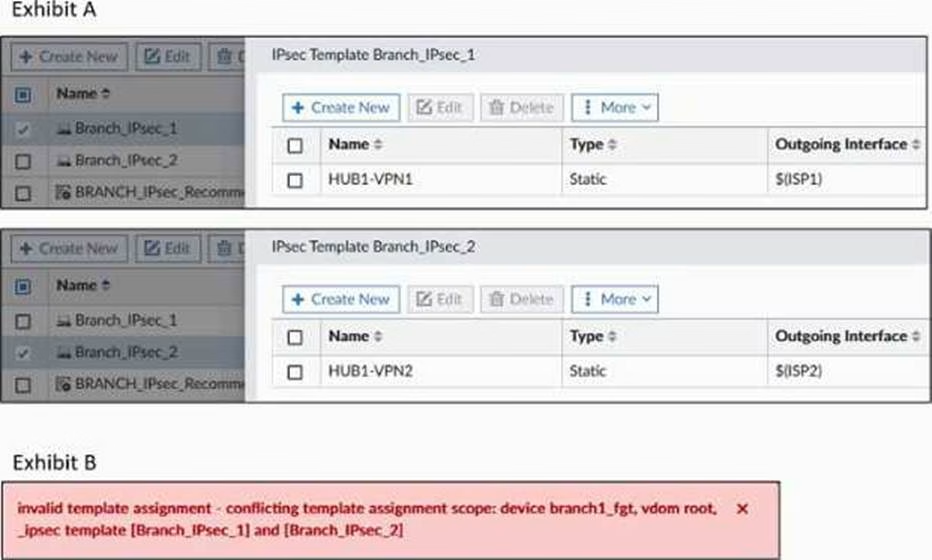
Exhibit A shows two IPsec templates to define Branch_IPsec_1 and Branch_IPsec_2. Each template defines a VPN tunnel.
Exhibit B shows the error message that FortiManager displayed when the administrator tried to assign the second template to the FortiGate device.
Which statement best explain the cause for this issue?
- A . You can assign only one template with a tunnel of fype static to each FortiGate device
- B . You can define only one IPsec tunnel from branch devices to HUB1.
- C . You can assign only one IPsec template to each FortiGate device.
- D . You should review the branch1_fgt configuration for the already configured tunnel with the name HUB1-VPN2.
Which statement about using BGP for ADVPN is true?
- A . You must use BGP to route traffic for both overlay and underlay links.
- B . You must configure AS path prepending.
- C . You must configure BGP communities.
- D . IBGP is preferred over EBGP, because IBGP preserves next hop information.
Which are three key routing principles in SD-WAN? (Choose three.)
- A . FortiGate performs route lookups for new sessions only.
- B . Regular policy routes have precedence over SD-WAN rules.
- C . SD-WAN rules have precedence over ISDB routes.
- D . By default, SD-WAN members are skipped if they do not have a valid route to the destination.
- E . By default, SD-WAN rules are skipped if the best route to the destination is not an SD-WAN member.
Refer to the exhibit.
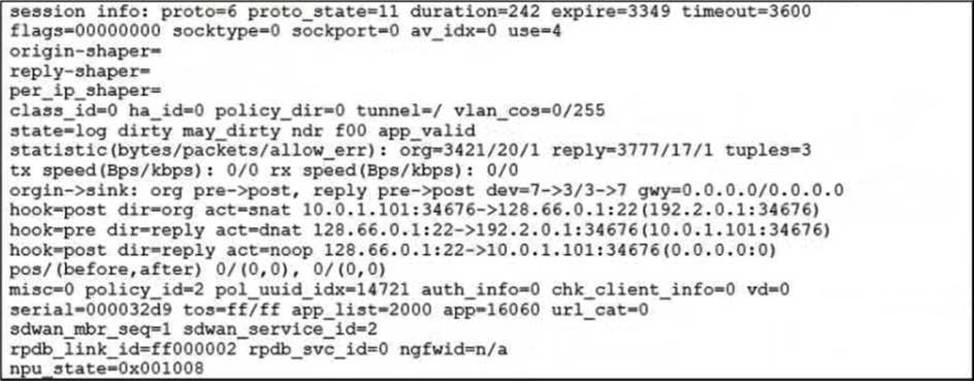
Which statement explains the output shown in the exhibit?
- A . FortiGate performed standard FIB routing on the session.
- B . FortiGate will not re-evaluate the session following a firewall policy change.
- C . FortiGate used 192.2.0.1 as the gateway for the original direction of the traffic.
- D . FortiGate must re-evaluate the session due to routing change.
What are two common use cases for remote internet access (RIA)? (Choose two.)
- A . Provide direct internet access on spokes
- B . Provide internet access through the hub
- C . Centralize security inspection on the hub
- D . Provide thorough inspection on spokes
Refer to the exhibits.
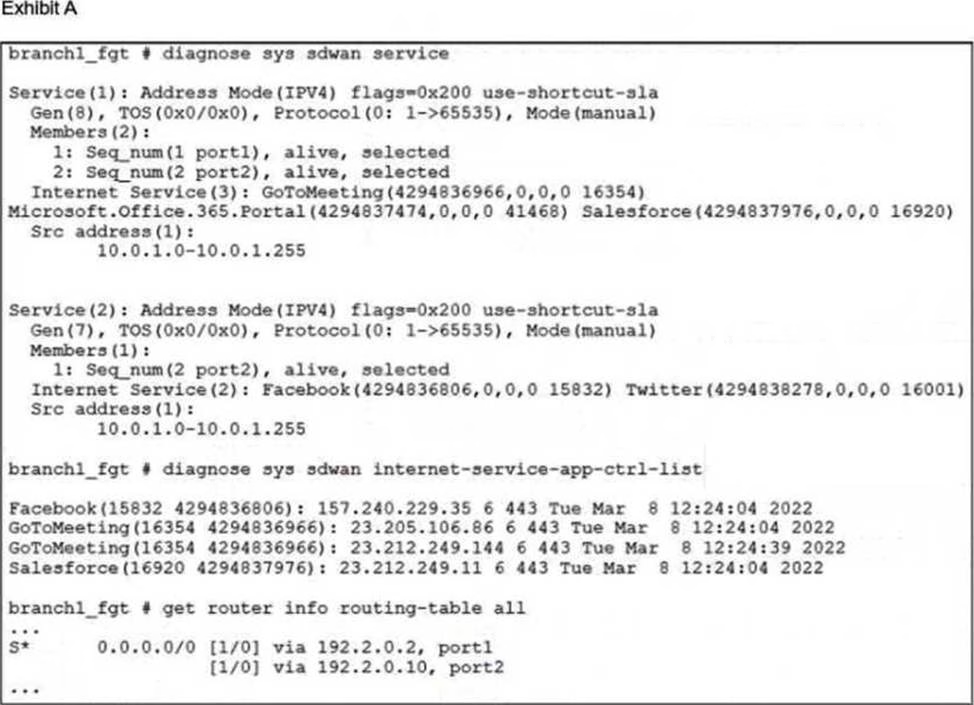
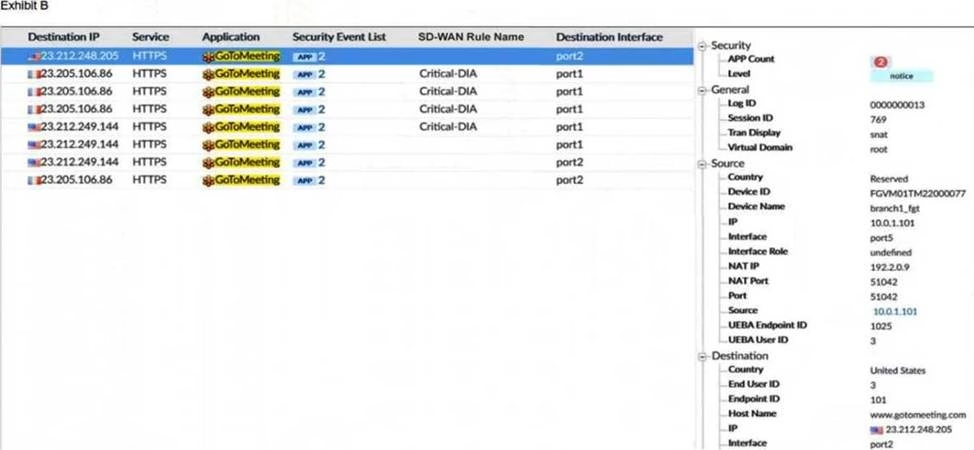
An administrator is testing application steering in SD-WAN. Before generating test traffic, the administrator collected the information shown in exhibit A.
After generating GoToMeeting test traffic, the administrator examined the respective traffic log on FortiAnalyzer, which is shown in exhibit B. The administrator noticed that the traffic matched the implicit SD-WAN rule, but they expected the traffic to match rule ID 1.
Which two reasons explain why the traffic matched the implicit SD-WAN rule? (Choose two.)
- A . FortiGate did not refresh the routing information on the session after the application was detected.
- B . Port1 and port2 do not have a valid route to the destination.
- C . Full SSL inspection is not enabled on the matching firewall policy.
- D . The session 3-tuple did not match any of the existing entries in the ISDB application cache.
Refer to the exhibit.
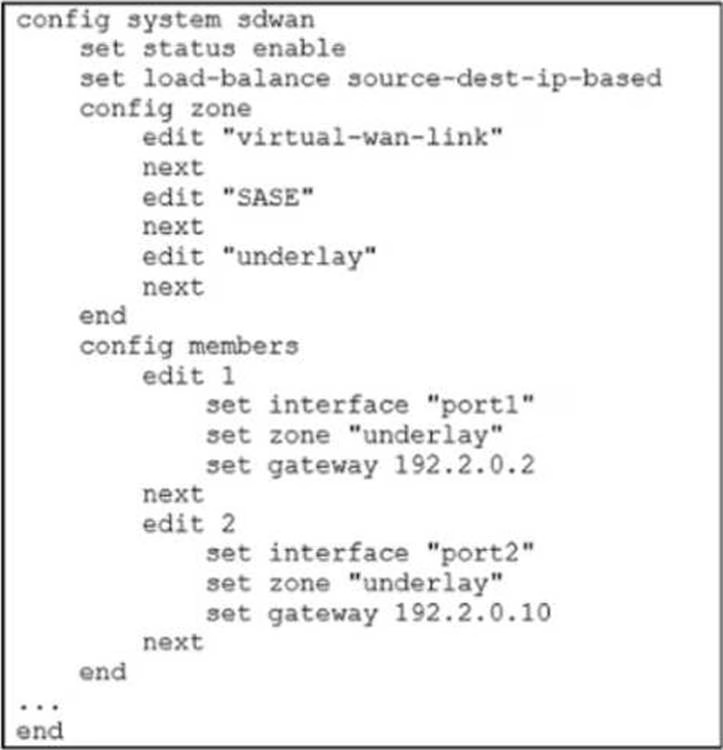
Which algorithm does SD-WAN use to distribute traffic that does not match any of the SD-WAN rules?
- A . All traffic from a source IP to a destination IP is sent to the same interface.
- B . All traffic from a source IP is sent to the same interface.
- C . All traffic from a source IP is sent to the most used interface.
- D . All traffic from a source IP to a destination IP is sent to the least used interface.
Refer to the exhibits.
Exhibit A
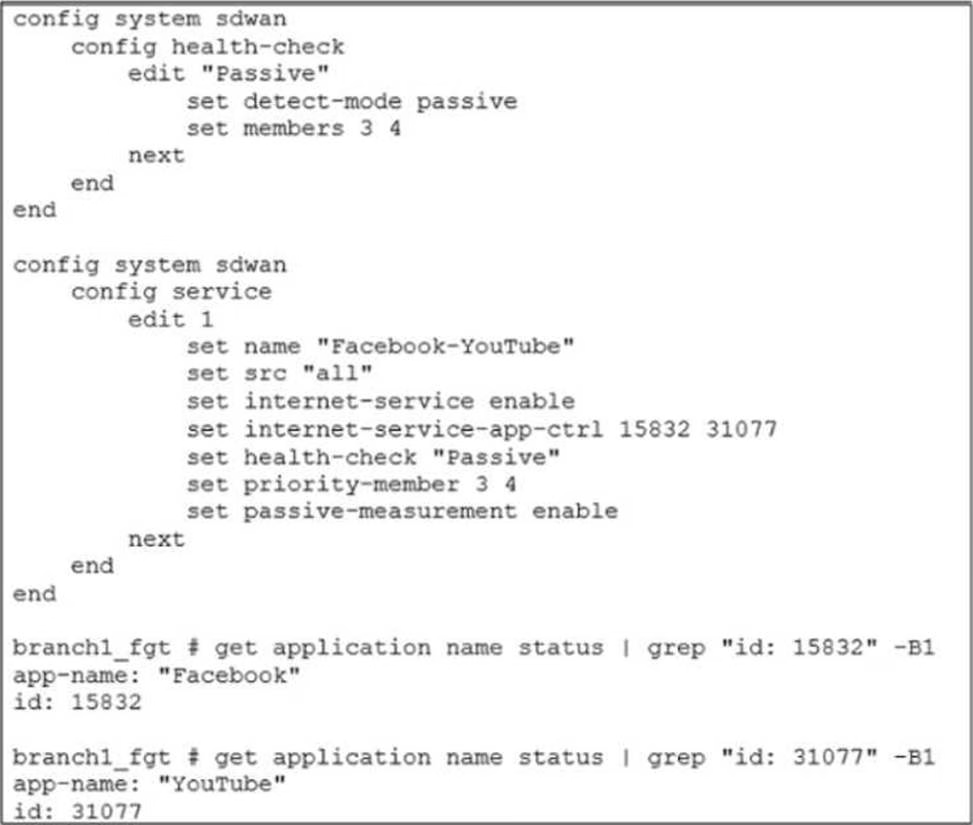
Exhibit B
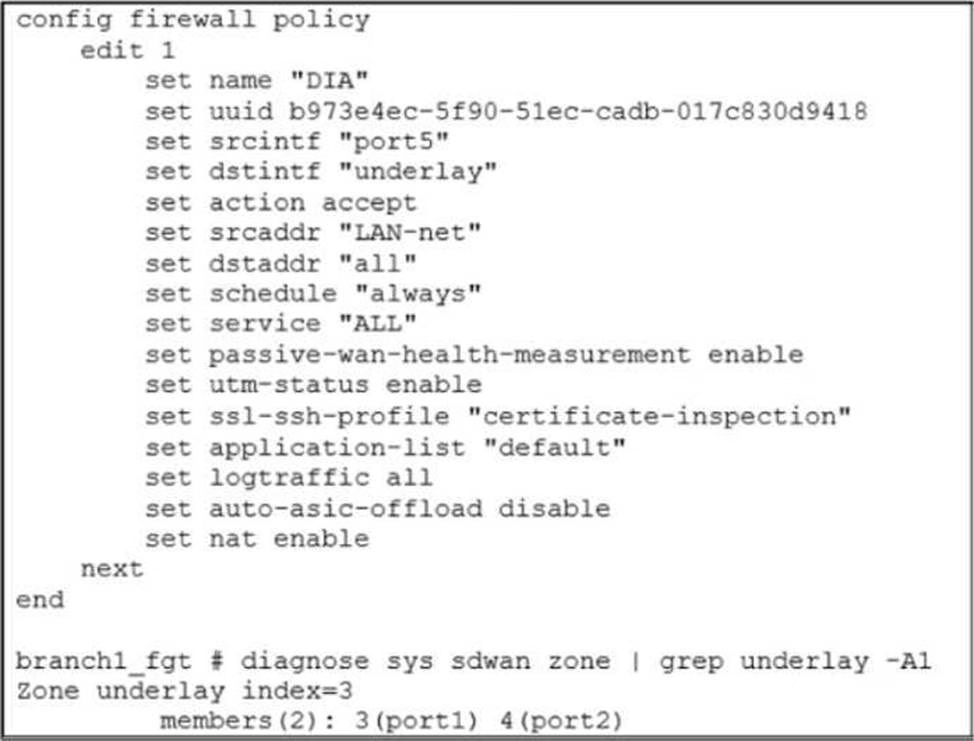
Exhibit A shows the SD-WAN performance SLA configuration, the SD-WAN rule configuration, and the application IDs of Facebook and YouTube. Exhibit B shows the firewall policy configuration and the underlay zone status.
Based on the exhibits, which two statements are correct about the health and performance of port1 and port2? (Choose two.)
- A . The performance is an average of the metrics measured for Facebook and YouTube traffic passing through the member.
- B . FortiGate is unable to measure jitter and packet loss on Facebook and YouTube traffic.
- C . FortiGate identifies the member as dead when there is no Facebook and YouTube traffic passing through the member.
- D . Non-TCP Facebook and YouTube traffic are not used for performance measurement.
Refer to the exhibit.
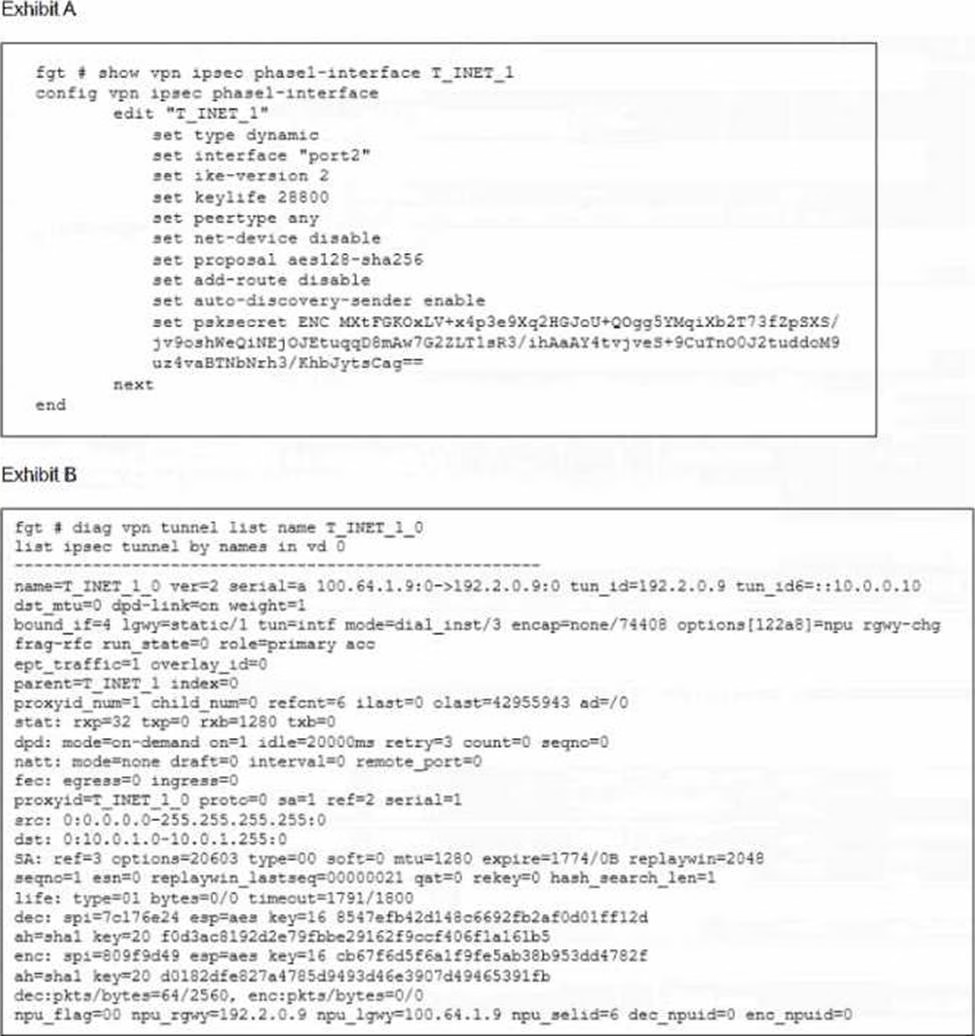
Which two statements about the IPsec VPN configuration and the status of the IPsec VPN tunnel are true? (Choose two.)
- A . FortiGate does not install IPsec static routes for remote protected networks in the routing table. Most Voted
- B . The phase 1 configuration supports the network-overlay setting. Most Voted
- C . FortiGate facilitated the negotiation of the T_INET_1_0_0 ADVPN shortcut over T_INET_1_0.
- D . Dead peer detection is disabled.
Refer to the exhibits.
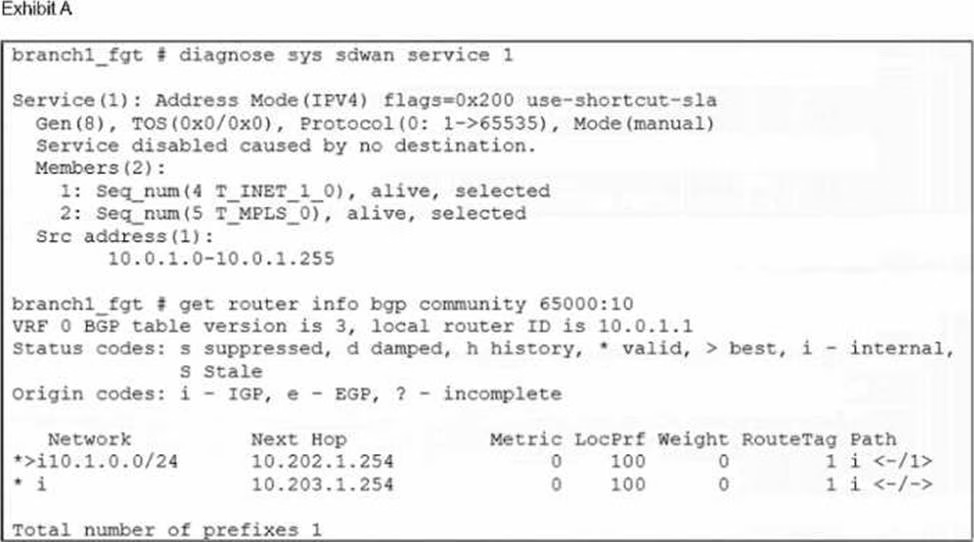
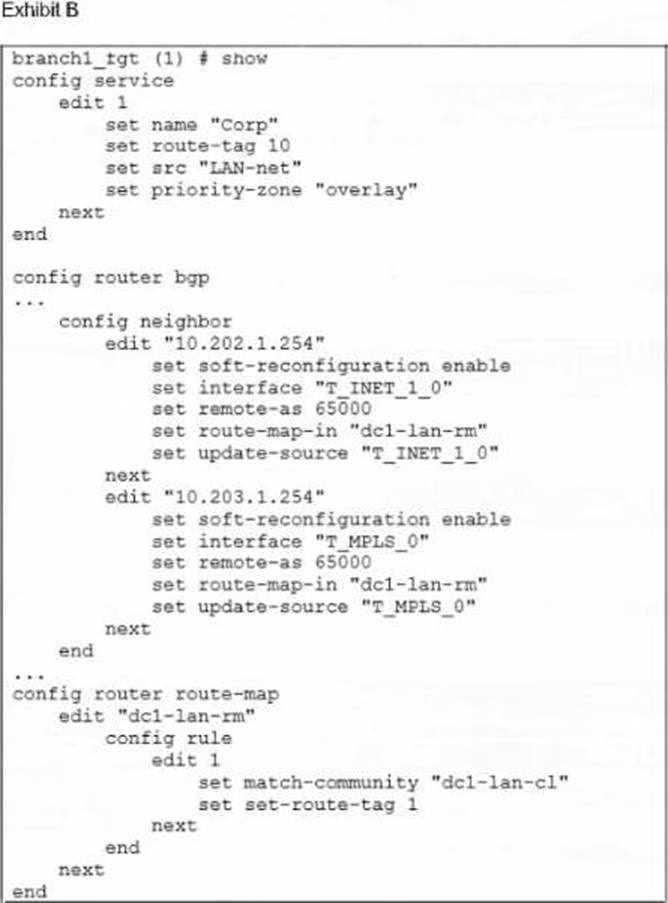
Exhibit A shows the SD-WAN rule status and the learned BGP routes with community 65000:10.
Exhibit B shows the SD-WAN rule configuration, the BGP neighbor configuration, and the route map configuration.
The administrator wants to steer corporate traffic using routes tags in the SD-WAN rule ID 1.
However, the administrator observes that the corporate traffic does not match the SD-WAN rule ID 1.
Based on the exhibits, which configuration change is required to fix issue?
- A . In the dcl-lab-rm route map configuration, set set-route-tag to 10.
- B . In SD-WAN rule ID 1, change the destination to use ISDB entries.
- C . In the BGP neighbor configuration, apply the route map dcl-lab-rm in the outbound direction.
- D . In the dcl-lab-rm route map configuration, unset match-community.
Latest NSE7_SDW-7.2 Dumps Valid Version with 70 Q&As
Latest And Valid Q&A | Instant Download | Once Fail, Full Refund

